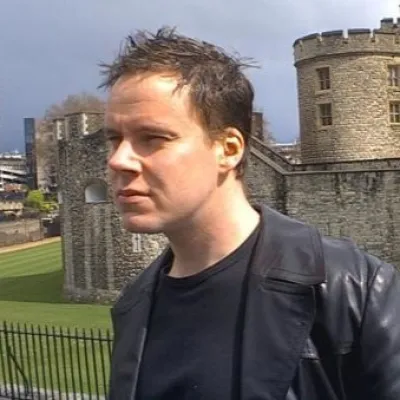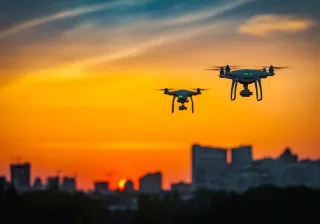VTT has harnessed AI as a tool to accelerate research and bring new perspectives to fields ranging from biotechnology to manufacturing industry. AI is simultaneously changing how we conduct research.
Read the summary
- The integration of AI in healthcare improves diagnostics and patient safety by identifying critical cases for doctors, predicting risks like lung cancer, and using privacy-conscious models for training.
- VTT's AI-driven monitoring solutions utilise unnoticeable tech for real-time health monitoring, detecting stress, fatigue, and sleep disturbances, enhancing proactive health management while ensuring privacy.
- In material science, AI accelerates the development of new materials for technologies like fusion energy, exemplified by projects aimed at creating high-performance wall materials for reactors, showcasing AI's transformative potential in complex problem-solving.
This summary is written by AI and checked by a human.
AI can speed up the innovation process and make research results more rapidly available for use in society. VTT uses AI as part of its research process in many areas. Generative tools help with designing and planning research or even generating new entities like molecules and proteins in biotechnology. Machine learning, in turn, can be used for modelling phenomena in fields like energy production and biotechnology.
“AI solutions make it possible to produce insights faster and more efficiently. This helps us solve complex problems and choose the right approach in ways that are beyond what humans alone are capable of achieving”, says VTT Research Professor Heikki Ailisto.
More than 300 VTT researchers have strong competence related to applying AI in their work, and combining this competence in different scientific disciplines is one of VTT’s strengths.
This article takes a more detailed look at three VTT research areas in which AI helps develop new solutions.
1. AI in health care: support for diagnosis and personalised treatment
Effective utilisation of health data can improve diagnostics, personalise treatments and also save money. VTT is developing AI solutions that support doctors in areas ranging from lung cancer screening to identifying a stroke and early detection of memory disorders.
One of the biggest advances is linked to methods that respect privacy. AI is trained with synthetic data or in a decentralised model where, rather than transferring data, algorithms actually go to the data. This ensures data security and makes it possible to expand research opportunities.
One example is the IHI (Innovative Health Initiative)-funded IDERHA project, where VTT is contributing to the development of AI models that predict the risk of lung cancer and enhance diagnostics.
AI identifies the cases that a doctor should focus on. It facilitates the treatment chain, reduces unnecessary workload and improves patient safety.
“AI allows us to build more proactive and precise health care. When we identify the people who are about to get sick or those who are already sick but showing no symptoms, we can avoid the most aggressive treatments and save money for society,” explains VTT Research Team Leader Mika Hilvo.
2. Monitoring vital functions can be unnoticeable
For a long time, health was only measured in a hospital setting. Measurement has now moved into the home, onto the wrist and even under the bed. Technology development has made it possible to measure physiological signals without needles, wires or uncomfortable devices.
Smart wristbands and other wearable devices can measure things like heart rate, stress and quality of sleep. AI analyses signal combinations and learns individual models that can reveal stress before a person notices it themselves.
One interesting research area focuses on predicting fatigue and sleep disturbances. VTT is part of the IDEA-FAST project, which collects human measurement data and uses AI to find biomarkers that indicate fatigue. A sensor placed under a person’s mattress measures the different phases of their sleep, and this data provides the foundation for building a model of sleeping and sleep quality. Measurement gives researchers access to objective data. Although a person’s own experience is important, it is not always accurate. A machine may notice a change that a person can’t perceive.
“The latest sensor solutions are unnoticeable to the person being measured, but they provide researchers with extremely valuable information. The unique strength of AI lies in the fact that it can combine information from different data sources and find new, clinically significant biomarkers,” says VTT's Research Team Lead Teemu Ahmaniemi.
The practical benefit of continuous, unnoticeable measurement is concrete: if a monitor worn on the wrist issues a warning about an increase in blood pressure, the problem can be treated at home. Anticipation and properly-timed treatment means that the patient avoids unnecessary hospital visits.
Another benefit of AI technology is associated with preserving privacy. When AI operates locally and doesn't transfer data into the cloud, the devices are also suitable for users who are wary of sharing their information.
3. New materials for the green transition and fusion energy
Future technologies – like fusion energy or more efficient electric car batteries – require new materials that can withstand extreme conditions. The slow pace of material development is a problem: it can take decades for a new mixture to move from laboratory to market.
AI can accelerate this development. In the Material Accelerator Platform model developed by VTT, AI suggests new material combinations that are produced and tested by laboratory robots. The method creates a continuous learning loop that combines data, manufacturing and modelling.
VTT is developing wall materials for fusion reactors in the US Department of Energy’s ARPA-E programme. These materials have to withstand extreme heat and radiation. AI makes it possible to build computational walls using different combinations of chemical elements.
“If we don’t find an industrially useful solution in three years, the project will be considered a failure. This shows just how radically AI is changing the dynamics of research,” states Research Professor Anssi Laukkanen.
According to Laukkanen, the entire future of the material research field depends on who can successfully combine AI, computational methods and real-world manufacturing into a seamless entity.
“AI doesn’t make science any easier, but it does make it possible to solve problems that we haven’t been able to deal with previously,” says Laukkanen in summary.









